Beautiful lawns are awesome, everybody loves lush green grass; however, in your vegetable garden or in your flower beds grass and weeds can be terrible invaders that just take over the ground choking out your plants and vegetables.
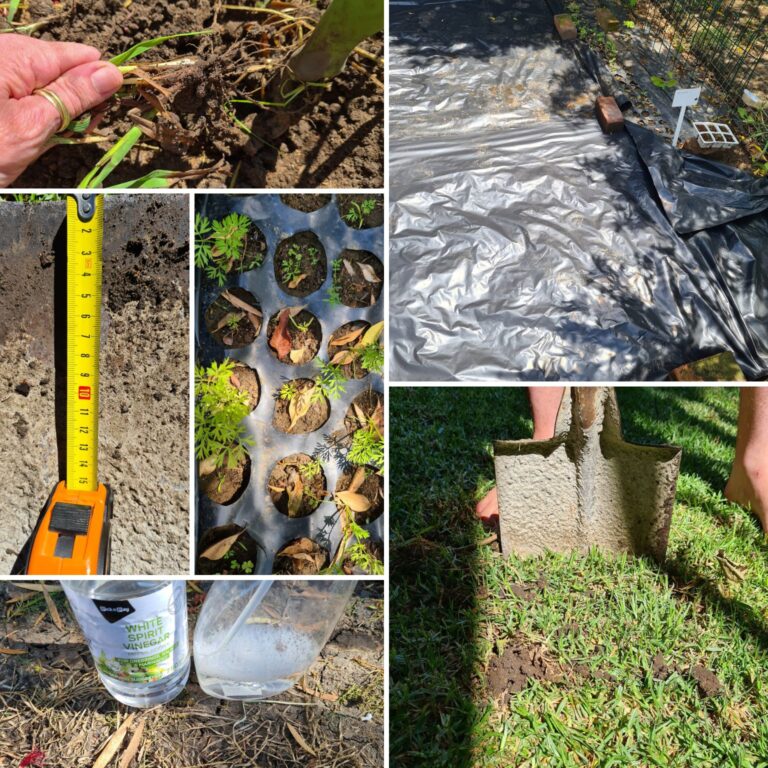
We have the most horrible clay soil imaginable in our province. It is thicker and denser than play dough!
The only thing that does not struggle to grow in it is grass! Boy oh boy is it hard to remove the grass by hand.
If you don’t get all the roots out of the ground the grass will just continue to grow and grow and grow. If like me, you have thick clay soil getting the roots out is a major problem.
So, what is the solution? Well, there are several choices available, some are more labor-intensive, and others are easy as pie. Let’s find the solution for you.
Table of Contents
When to Kill Off Grass and Weeds in Your Beds
No matter what time of year it is, what season it is, what you have available, if you ask me right now when the best time is to kill off grass and weeds in your beds, I will answer with RIGHT NOW!
Grass spreads by a deep underground root system, it also propagates by dropping seeds, for this reason if you want to get rid of grass in your garden you will have to remove the roots.
If you don’t get all the roots, you can rest assured that the grass will grow back, and it will come back with a vengeance.
Get rid of the grass as soon as you see it.
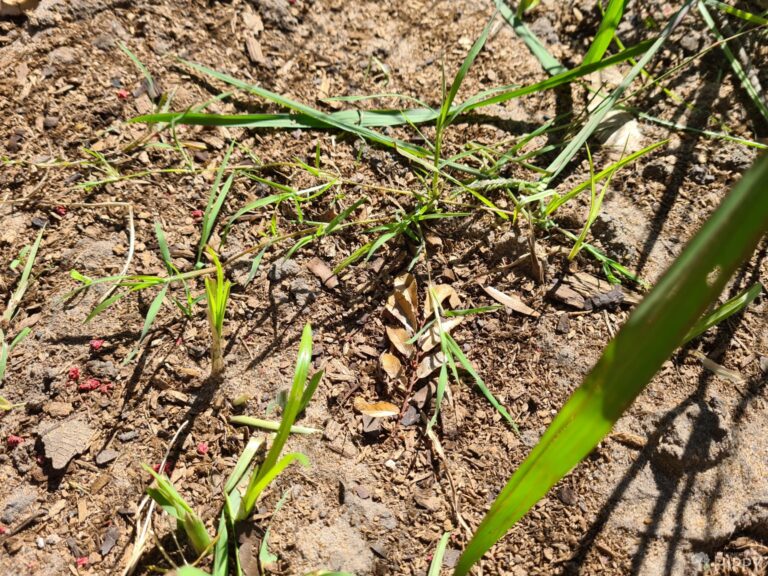
Assess the Situation
Before you decide on a way to remove grass and weeds that will suit your needs, you need to know what your needs are.
Are you creating a new bed?
I was injured in a car accident in 2004 and was unable to have a vegetable garden for 13 years. I do not know what hurt more, my body or the lack of a vegetable garden to tend.
Then my husband thought it would make me happy just to have a greenhouse. Well, the poor dude wound up doing a lot of hard labor that I could not do myself to set up a workable garden for me.
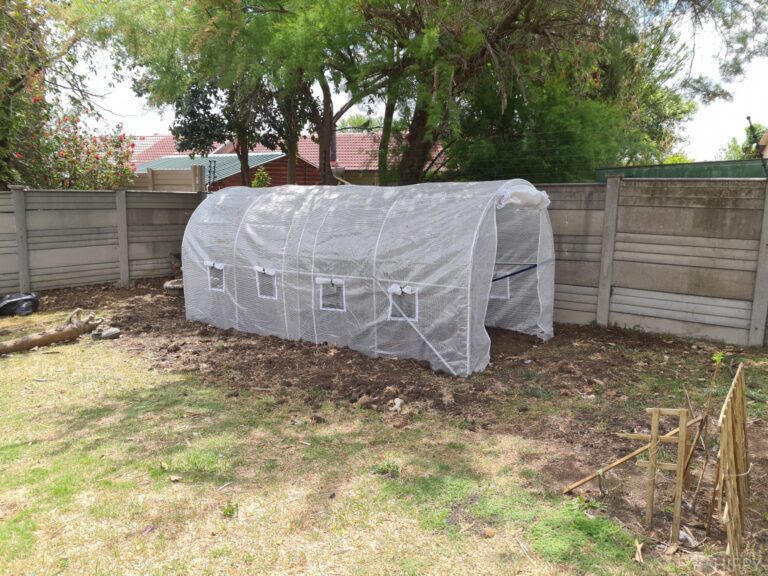
How bad is the bed?
Where are the weeds and grass?
Have you cleared the area by hand and now want to prevent weeds and grass from growing back?
Are the weeds popping up in your established beds among your flowers and veggies?
Do you know how different plants respond to each method?
Are you going to opt for organic? If you are, I thank you!
What types of weeds and grass are in your yard?
If you have an idea of what the scale of the problem is, you will be able to make a better-informed decision that will work for you.
So, put on some old clothes, grab a garbage bag, whatever you are planning on using to kill the grass and weeds, and put on a pair of gardening gloves.
Now you should be ready to look at the different solutions, so, here we go!
The Hard Way to Remove Grass and Weeds
If you love hot, backbreaking, torturous, labor, go for it. Removing grass and weeds by hand often leaves tiny little bits of roots in the ground.
It is especially hard if the root system is very deep and established, and if the soil is very compact.
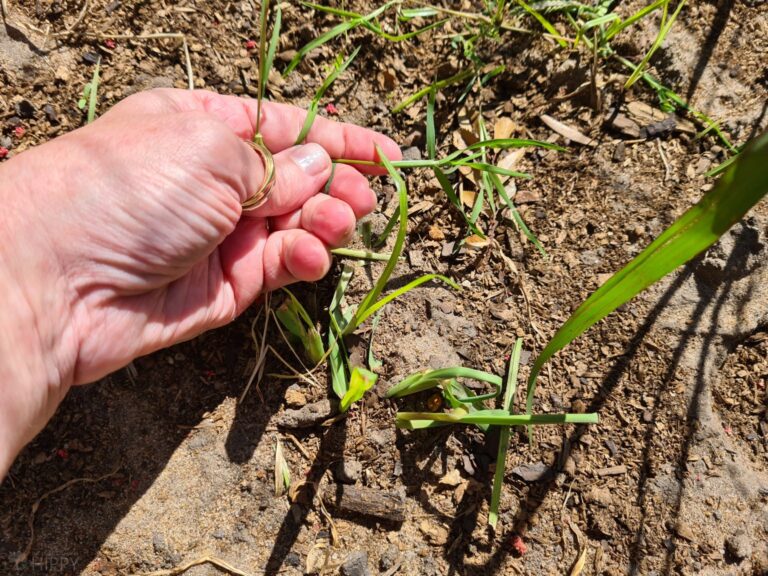
I recommend that as soon as you see a blade, use a fork to dig up the roots to prevent the root from reestablishing a brand-new chunk of chaos.
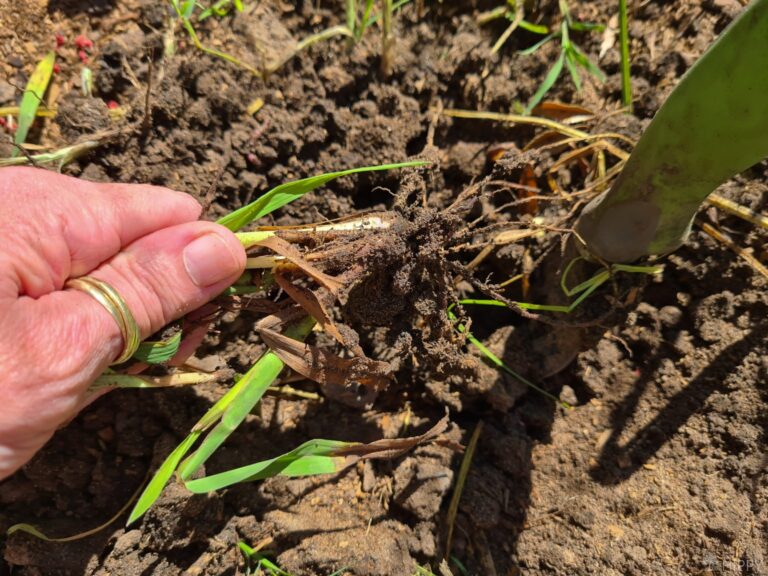
Removing grass and weeds by hand can actually be more harmful to your garden than good if done carelessly.
You would have to dig gently under the grass and weeds loosening the soil to remove them at the root level.
While doing this you can actually release seeds and spread them, allowing them to grow and spread even more.
It is always a good idea to have a tarp under the leaves and flowers of weeds to catch those seeds, and please do not carry the weeds from the bed to the compost in your hands. You will release seeds all the way.
Rather keep a refuse bag close by and immediately place the grass, weeds, and roots into the refuse bag for proper disposal.
For removing grass that is well established, you can cut out blocks of the grass using a spade. This is a very easy method if you are just starting out with a vegetable garden or with a flower bed.
- Soak the grass thoroughly to bind the roots properly at least once 1 to 3 days before you remove it.
- Use a spade (shovel) to cut squares of grass or strips that are 12 inches wide and 4 feet long, depending on the area of grass you want to remove.
Your spade should go 6 inches deep into the ground to secure a good root system. Removing the grass easily will depend on the size of the grass cut outs, the smaller the blocks the easier it will be to remove the grass.
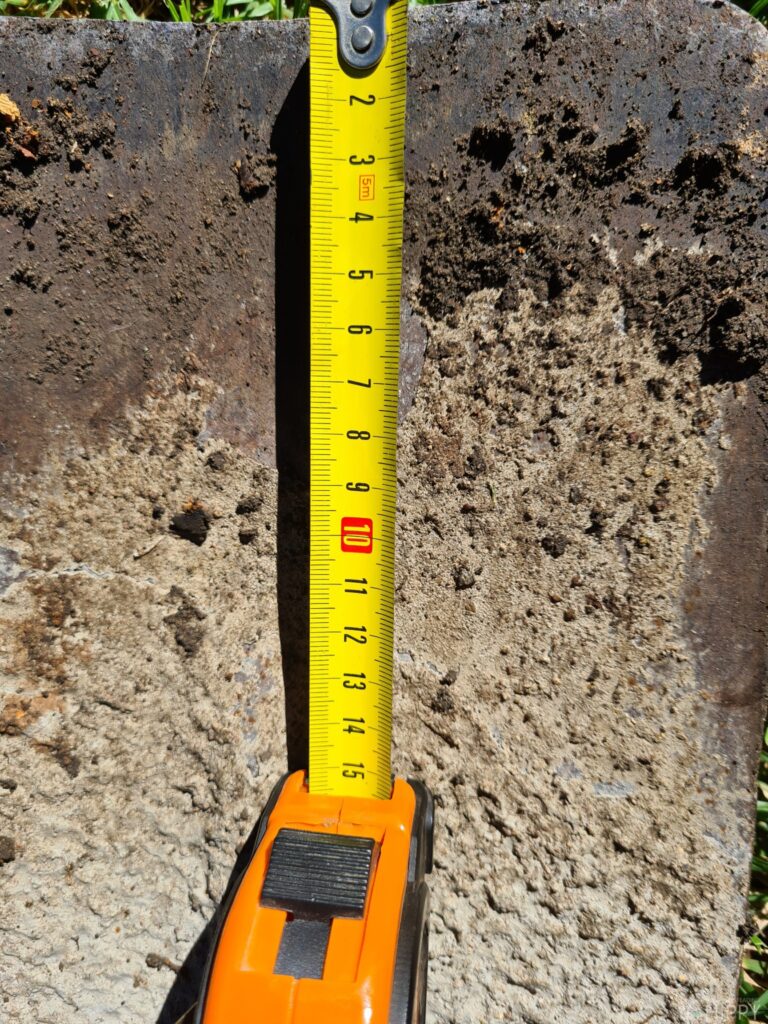
- Dig your spade 6 inches straight down
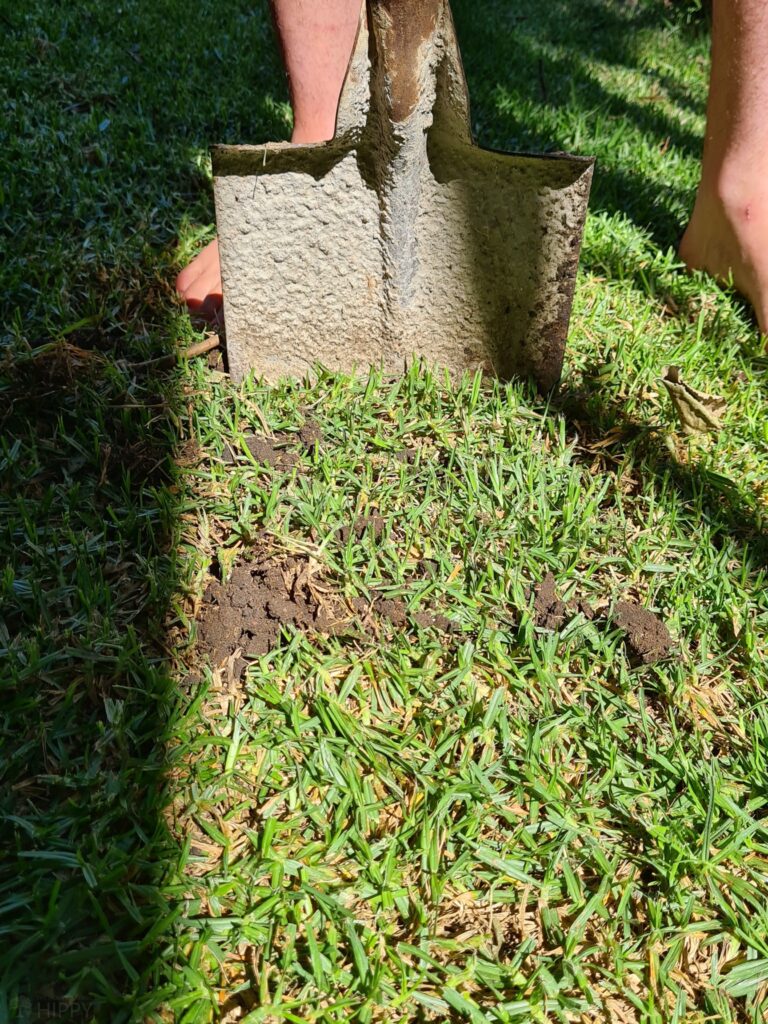
- Slide it carefully under the square you have cut out.
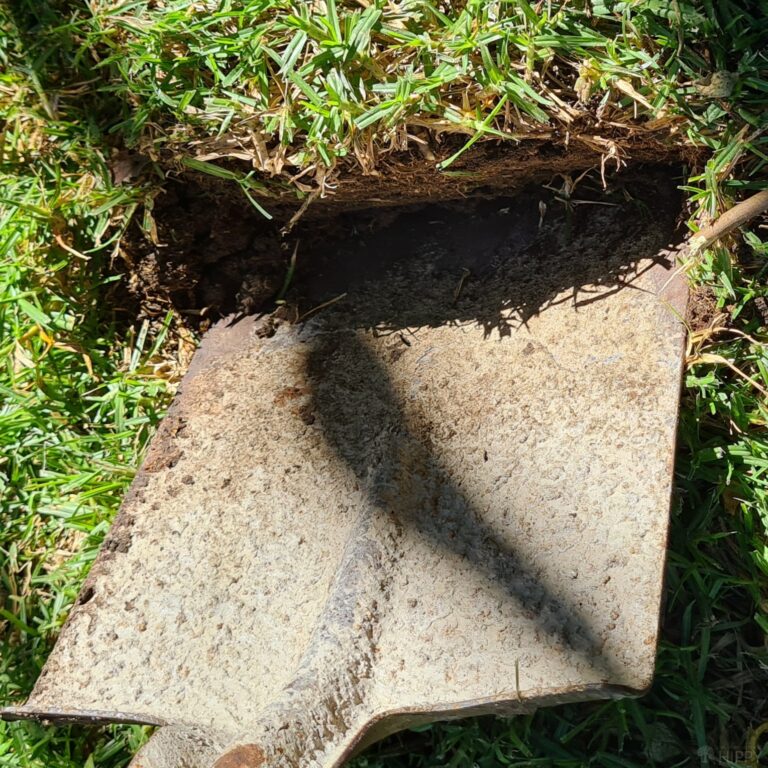
- Make sure you keep the spade under the roots at all times.
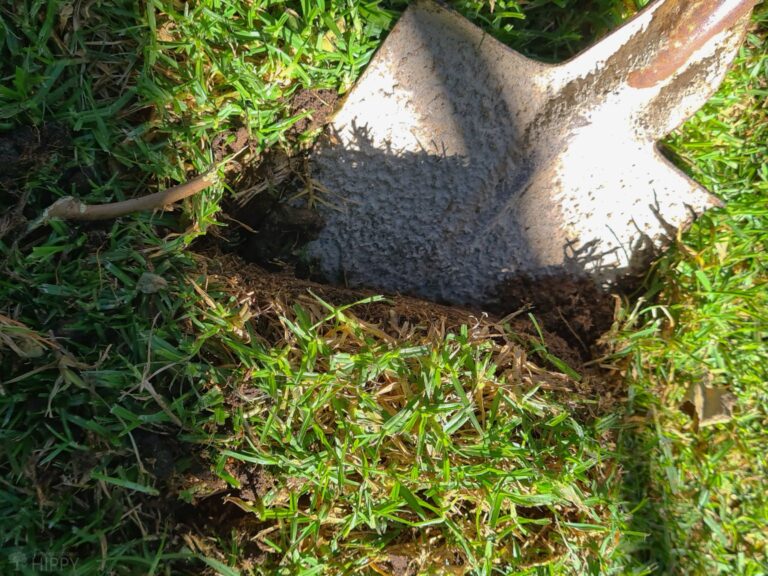
- Gently lift the grass; if you have cut a long strip, you will be able to just roll the grass up to remove it.
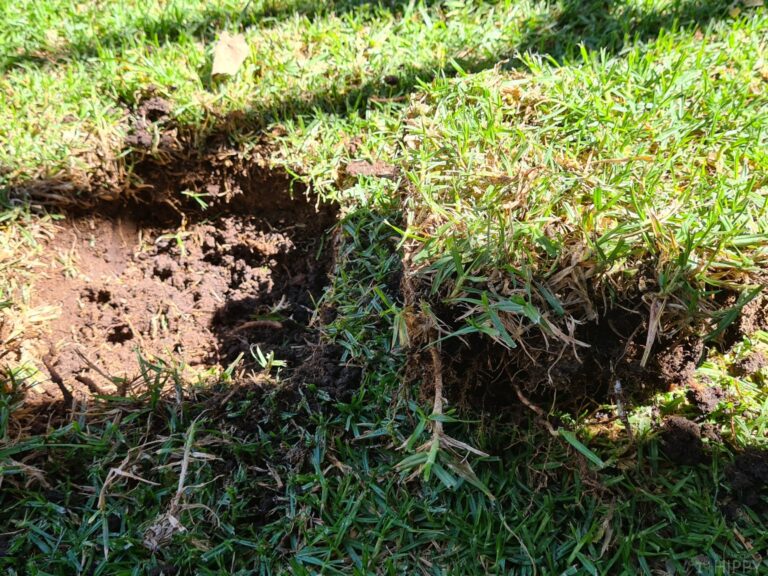
Use the grass to patch up holes in your lawn. Grass that has been moved with the roots intact will establish itself very easily.
Unfortunately, removing grass by hand will be an ongoing struggle because little bits of roots are all that is needed to allow the grass to grow back.
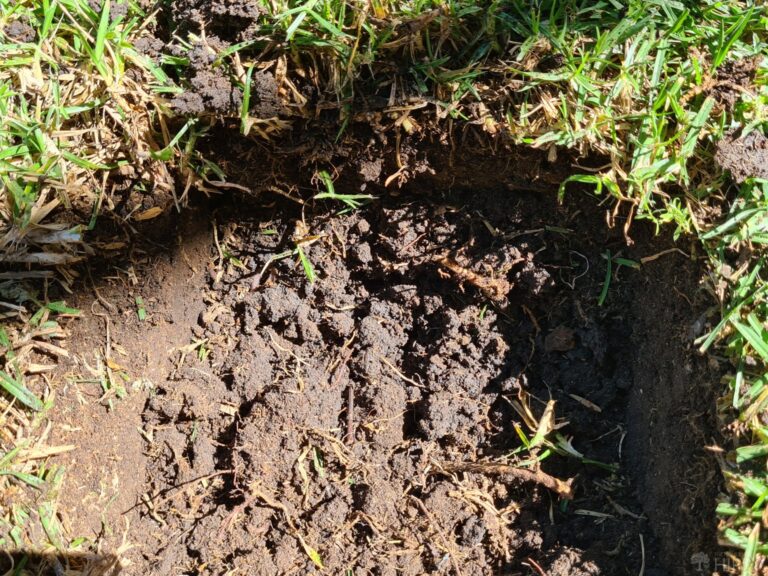
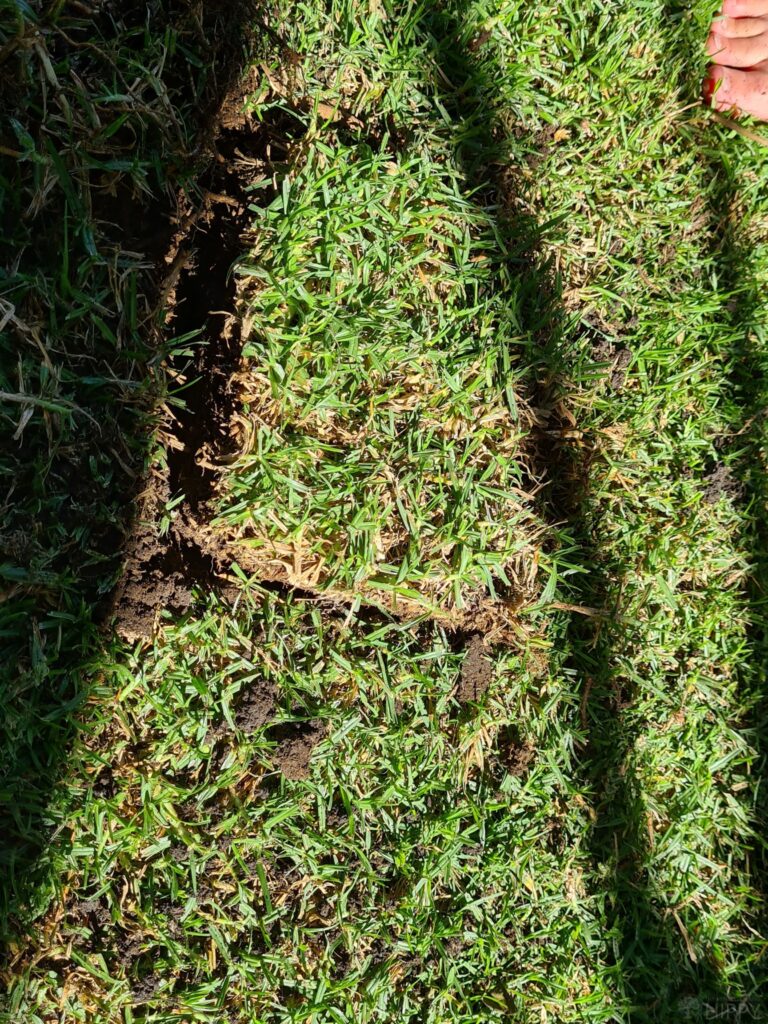
So, good luck with that.
Pros and Cons of Manual Labor
| Pros | Cons |
|---|---|
| ROFL | Backbreaking |
| Instant results | It is an ongoing problem that you will get no rest from |
| Most seeds are removed | Very labor intensive |
| Cheap | A big NOPE from me |
Chemical Solutions
There are many herbicides available to remove grass and weeds from flower beds and vegetable gardens.
A good broad-spectrum herbicide will kill off all grass and weeds. Most herbicides come as a liquid that you have to dilute in water before use. The chemicals then need to be sprayed onto the beds.
Premixed chemical herbicides also are sold in spray bottles, ready for use.
Once you spray the herbicide, you will need to observe the area and spray again if the grass and weeds are not dying off. Give it a few days until everything is dead, then dig up the grass or weeds removing all the roots.
- Pre-emergent herbicides prevent the germination of new seeds in the soil. They do not do anything to existing grass or weeds, however, if you have just weeded a bed or removed grass, it is a good idea to spray a little to prevent any seeds that dropped on the ground while you were removing the mature grass and weeds.
- Selective post-emergent herbicides target specific types of grass and weeds. They do not affect the ornamental plants or vegetables.
- Broad spectrum herbicides do not differentiate between plants, weeds, and grass. They kill everything they come into contact with. Repeatedly spray your bed for a couple of weeks until the grass and weeds are dead, then dig out the roots.
- Undiluted bleach kills grass and weeds permanently; however, I beg you, do not use bleach, it is not selective.
It kills everything it comes into contact with above and below ground. It will kill the microorganisms that keep your beds nutrient rich. It will kill your veggies and ornamental plants. It is also very harmful to the environment.
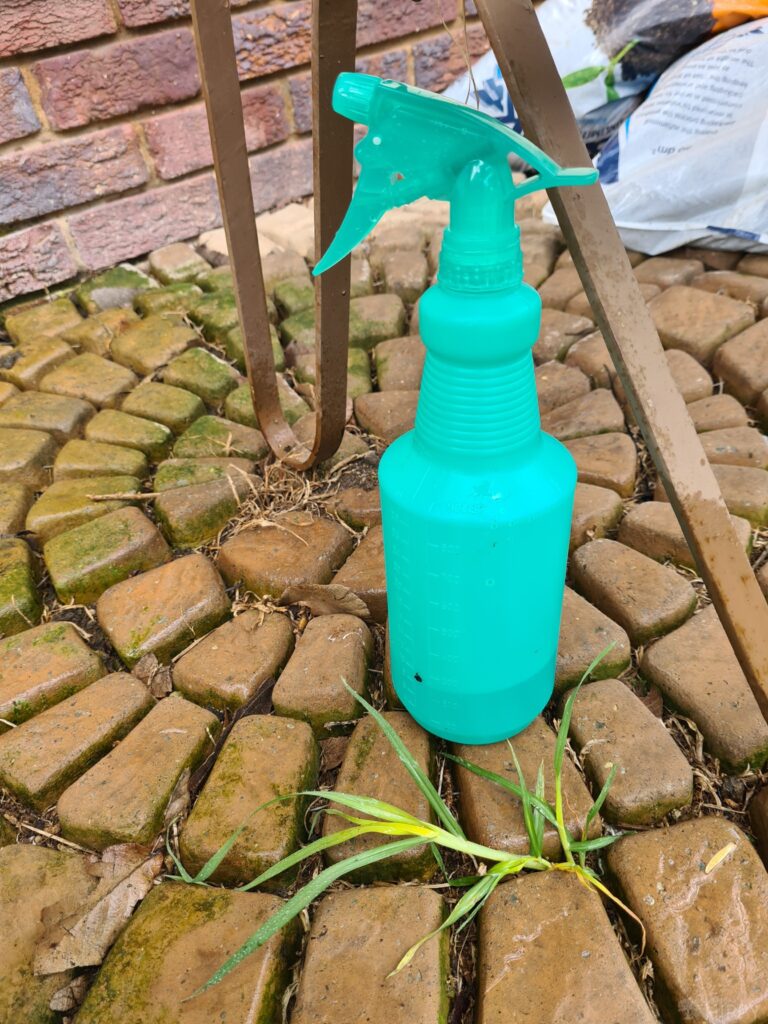
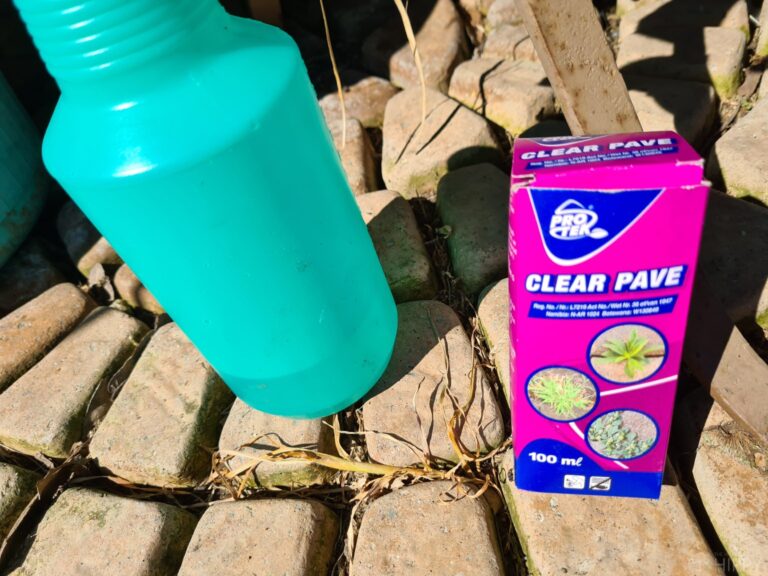
Pros and Cons of chemical solutions
| Pros | Cons |
|---|---|
| Instant results | Can kill existing ornamental plants and vegetables |
| Easy to manage | Can harm the environment |
| Targets specific invaders | Needs repeated treatments |
| Target specific herbicides will not harm other plants | May have to be reapplied until all the grass is dead |
| Can harm pets | |
| Can harm humans | |
| Can harm wildlife or livestock | |
| Can harm desirable plants | |
| Can harm the environment | |
| Preemergent will also kill seeds of desirable plants |
WARNING
Many herbicides contain chemicals that can harm the health of humans, pets, wildlife, and the environment. It’s best to use these products as a last resort, if at all, for any weed problem.
All Natural Solutions
This is a step in my direction. I love solutions that do not put my animals in danger. I almost typed that I love solutions that do not put my kids or animals in danger, but then I remembered my kids are all adults now.
But my kids were always a big concern. I have a child with many medical issues. Everything I allowed in my house or garden had to be seriously considered to prevent any medical issues.
The problem with many natural remedies is that they work well but they have hidden side effects on other plants and the environment.
Thankfully, there are plenty of safe, organic ways to tackle grass and weeds in your garden.
Many all-natural solutions are just cosmetic band-aids. By this, I mean that they kill what is above ground so that it looks like there are no weeds or grass, but the root systems remain intact, and the grass and weeds will just keep coming back.
- This one is an effective way to remove grass and weeds, but it can have a negative effect on the pH levels of the soil because of its acidity.
Mix water and a few tablespoons of white vinegar in a spray bottle and spray on the above-ground invaders. This will only kill what is above ground.
You will have to spray every week at least to keep up with weed and grass regrowth. You will have to spray over and over until the root dies.
Vinegar breaks down within 2 to 3 days. Not much will seep into the ground, but what seeps in will be neutralized quickly, especially if the soil is damp.
If you have dogs, think twice; vinegar can cause diarrhea in dogs. I do not recommend the use of vinegar as it interrupts the microorganisms that are needed to keep the soil healthy.
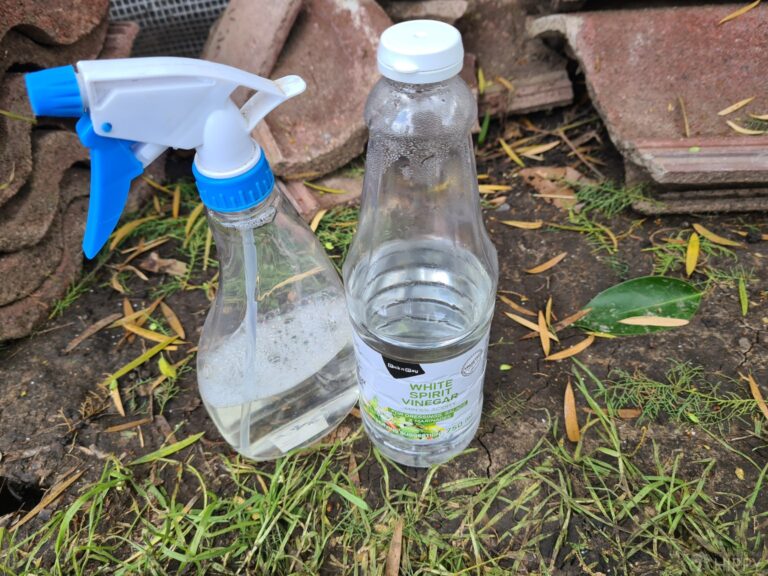
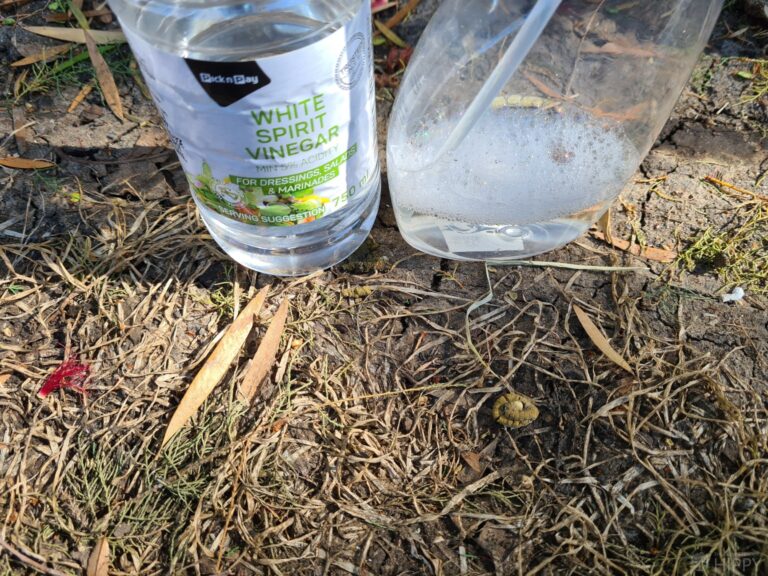
- Citrus is very effective because of its high acidity. However, as with vinegar, the high acidity will upset the pH balance of the soil.
- Mixing dish soap with the vinegar-water mixture will have the same effect. It kills what is visible but does not kill the roots.
- Baking soda mixed in water or spread-out dry is great for getting rid of those invaders. It will need to be reapplied until the grass and weed roots are dead and can be removed.
- Pour boiling water over the grass and weeds. The heat of the boiling water will kill the roots and dormant seeds by collapsing the plant’s cell structure.
Be careful not to pour boiling water over your ornamental plants and vegetables; take their root systems into account.
- Solarization is one of the most effective methods of killing off grass and weeds. Spread clear plastic over the affected area; the sunlight will heat the soil killing off all plant life under the plastic.
- A propane torch can be used to kill off the whole plant, roots and all, by superheating them. A word of caution, do not burn in the dry season, you do not want to risk starting a wildfire. Also, keep a hose or bucket of water close by.
- Corn gluten controls crabgrass and weeds, it does not kill turf grasses. If your problem is that your lawn went crazy or if you want to kill a patch of lawn to create a new bed, corn gluten is not the answer you seek.
Pros and Cons of Going Natural
| Pros | Cons |
|---|---|
| Instant cosmetic fix | Inhaling vinegar can be bad news for your |
| Convenient fix for small spots of grass and weeds | Lung and skin |
| Great risk to desirable plants and pollinators | |
| Can destroy the pH balance of the soil |
Mulch
Mulching is an excellent way to stop weeds and grass from growing in your beds. Weeds and grass need warm soil and light to grow.
Wood bark, straw, and leaves all make excellent mulch.
Instead of throwing out raked-up leaves or burning them on a bonfire, mix them into the soil in your beds. For the best results, make your mulch barrier 2 to 3 inches deep.
Every time you apply mulch to your beds, you are composting in the ground. Earthworms will lick their lips at the dead plant matter and turn it into nutritious compost.
Mulching also helps moderate the temperature of the soil.
If you choose to mulch, first use a trowel to pull up the weeds, grass, and roots, cover the area with a black plastic tarp or black refuse bag, and make sure you cover the whole area without any invaders peeping through.
Cut X’s in the tarp to plant plants at the correct distances. Then cover the tarp with a thick 2-to-3-inch layer of mulch hiding the tarp completely.
Add layers of newspaper and cardboard to your beds. Paper is biodegradable and blocks the light weeds and grass need to grow.
Pros and Cons of Mulching
| Pros | Cons |
|---|---|
| Cheap | Untidy |
| Easy to apply | Takes a long time to kill roots |
Smother the Grass or Weeds
This is my favorite way to kill off unwanted grass and weeds. This method takes all of 10 minutes to set up, and it can take one to two months to kill off all the grass and weeds 100% gone.
Simply spread a dark-colored, preferably black, tarp over the area or bed that you are looking to remove all the grass and weeds from, tuck in any strays along the sides of the tarp so everything is covered
Then line the outside of the tarp with bricks to weigh it down so it doesn’t blow in the wind and so that it traps all the weeds inside, and so that nothing is coming to peep out from under the tarp.
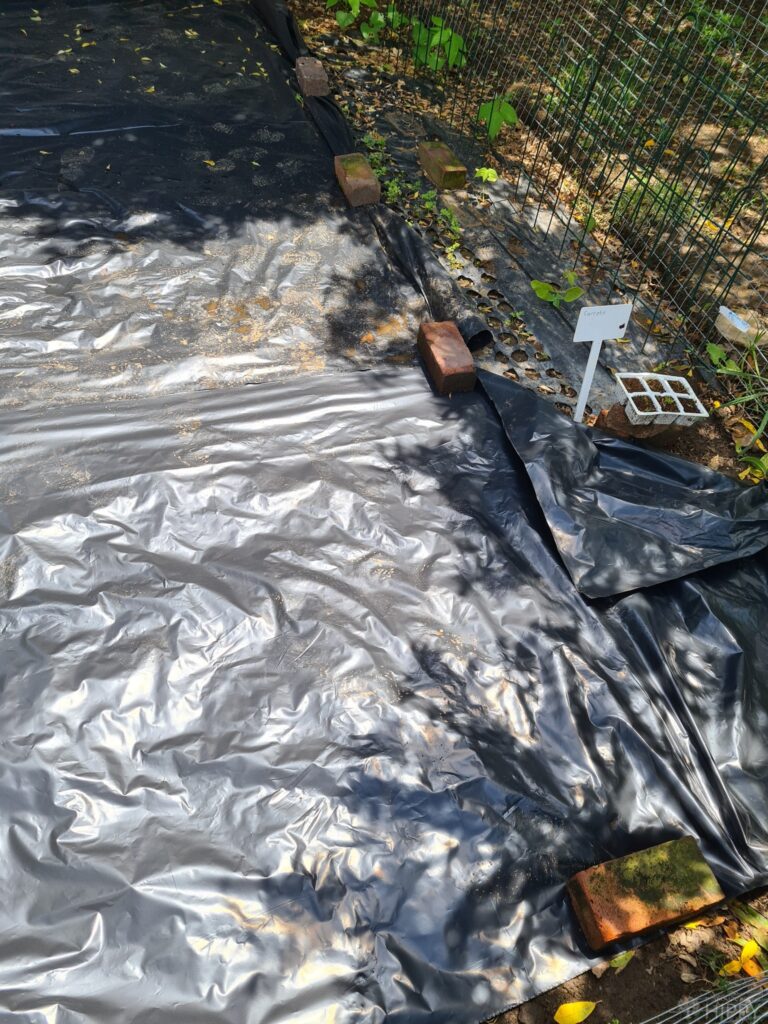
The warmth of the tarp will help retain moisture underneath the tarp and heat the soil making perfect conditions for worms to come in and eat off all the dead plant material while aerating and composting the soil.
Check under the tarp after one month and decide if you want to leave the tarp on for an extra month just to make sure that everything is dead.
I like to do this during the winter months and into spring so that when I’m ready to sow my next seasons vegetables the earth has some good quality compost provided by the worms and all the grass and roots are gone so it is easy to plant straight into the soil.
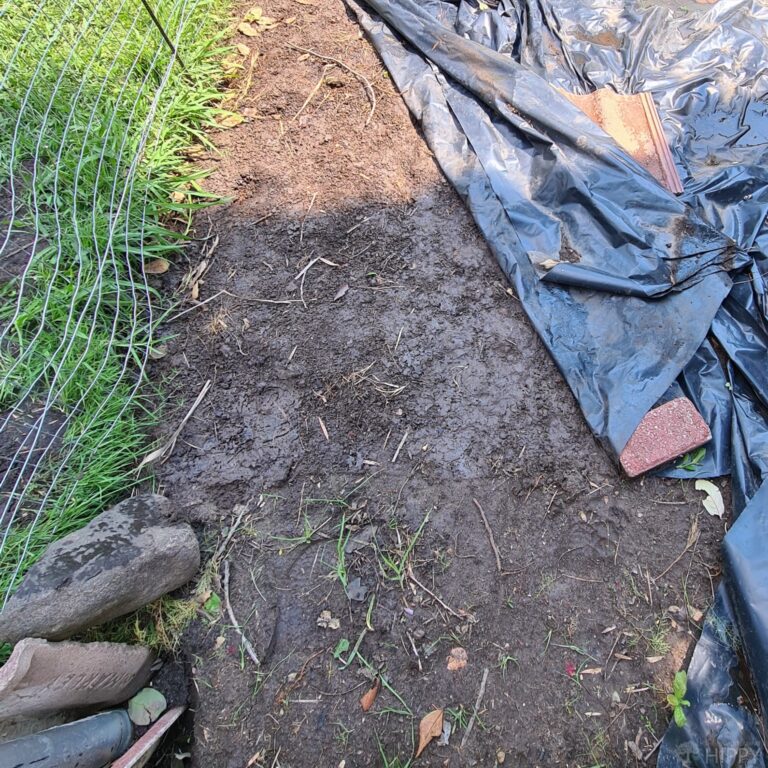
It normally takes a month or two to kill off grass and weeds at the root if they are deprived of light and oxygen.
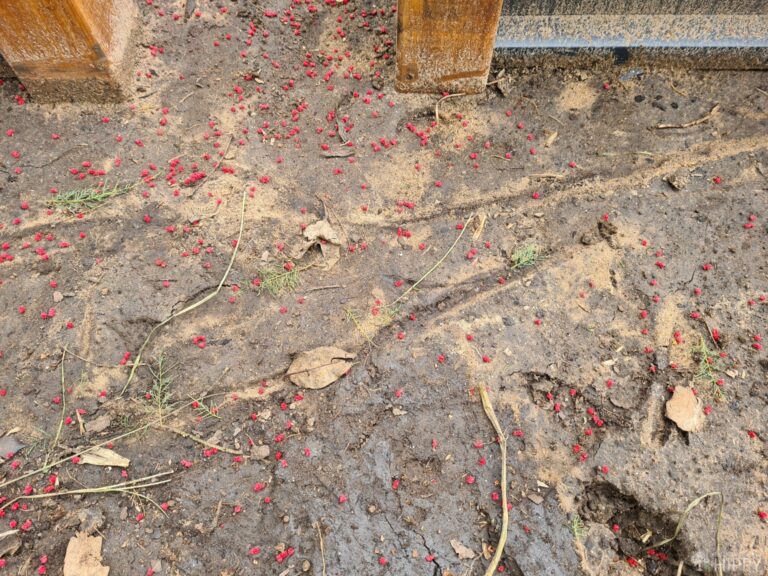
Using a clear or light-colored tarp will not work as effectively as a black tarp.
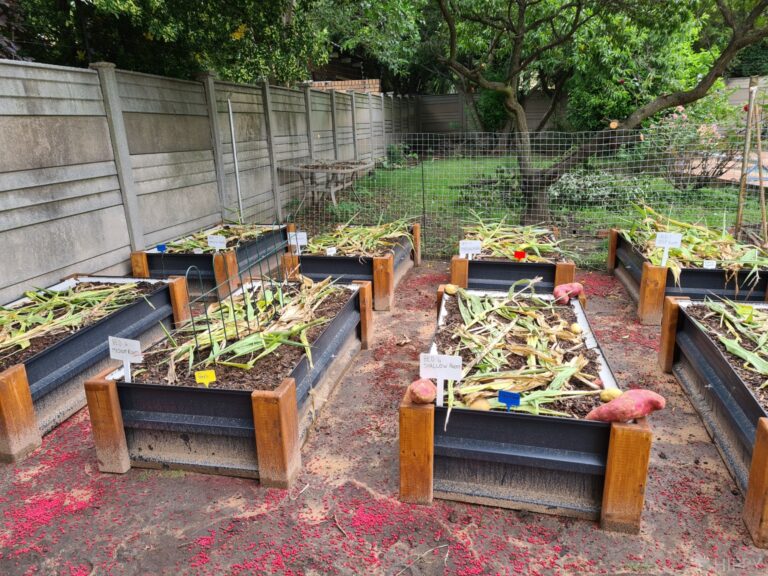
Pros and Cons of Smothering Grass and Weeds
| Pros | Cons |
|---|---|
| Inexpensive | Kills all plant life |
| Easy to do | Looks a bit messy |
| Does not interfere with biomes | |
| Free compost | |
| Minimal labor needed |
Solarization
Solarization takes care of more than weeds and grass, it also controls pests like bacteria and insects.
First, clear the area properly, and remove any debris, plants, and as much grass and weeds as you can. Water the soil deeply. You want the ground to be nice and moist.
Cover the area you want cleared of grass and weeds with clear plastic and anchor the plastic in place by placing some bricks around the edges of the plastic. Eliminate as much as possible under the tarp.
Leave the plastic in place for four to six weeks. It is best to solarize your raised beds in late spring or summer when the sun is at its hottest.
This method allows the soil to retain more heat; the heat and lack of oxygen are what kills the grass, weeds, and roots.
In 4 to 6 weeks, you’ll be able to remove the plastic. At this point, all plant material under the tarp will be dead. Instead of clearing it away by hand, leave it where it is and allow your earthworms to convert it into compost.
Pros and Cons of Solarization
| Pros | Cons |
|---|---|
| Very effective | Does not discriminate between plants |
| Effects are lasting | Untidy |
| Minimal labor | |
| Cheap | |
| Does not take long |
Mechanical Tools
If you do not own one, it may be worth your while to rent a sod cutter. Removing grass using a sod cutter will require very little effort with instant results.
Sod cutters can only go in straight lines; that is a minor limitation if you are not wanting to make your beds in straight lines.
A rototiller will also help remove weeds and grass. It does require a bit more effort than a sod cutter as the blades churn the grass back into the dirt.
The problem with using a rototiller is that it provides perfect conditions for spreading seeds from the grass and weeds.
For the best results using a rototiller, the soil should be medium moist to dry. If the soil is very wet the rototiller could get stuck in the mud very easily.
Pros and Cons of Using Mechanical Tools
| Pros | Cons |
|---|---|
| Instant results | Labor intensive |
| Can cause more of a problem by spreading the seeds | |
| Can destroy the soil structure upsetting the micro bacteria and fungi that absorb nutrients and minerals | |
| Rocks can damage the tiller | |
| Will require further weeding as seeds are spread | |
| The cost of rental can be high |
What to Avoid or NEVER to Use
Salt!
If you follow my work, picture my beloved Mrs. Jenny Melville-Smith jumping up and down on her desk throwing a pretend tantrum.
If you do not follow my work, get reading! I have lots of fun, easy to understand articles that are always peppered with my sense of humor.
If you haven’t had time to read all the articles I have published, picture me jumping up and down in front of you, red-faced, and hollering, Do not do it. Do not do it! Do not do it!
Salt is very effective when it comes to killing grass, weeds, roots, and all. However, if you have put salt down on your ground or in your beds it will not discriminate, it will kill everything in the bed.
Worse than that, it will take up to a year with lots of water to recover. Often the soil does not recover at all, and the land becomes barren.
And it gets worse, rain and watering will cause run off that carries the salt into the broader areas.
Your paddocks, grazing, yard, and whole vegetable garden could be rendered unusable for six to 12 months if not longer.
It can even run off into your neighbor’s property and you may have to deal with a very angry neighbor.
Vinegar and citrus are very acidic and can therefore damage the soil by upsetting the pH balance of the soil to the point that no plants will grow there again.
Never burn the soil. Nutrients will be washed away the first time it rains. Fire will also kill off all the beneficial microorganisms. The soil will become loose and unable to retain water, leading to runoff.
While effective, using boiling water to kill off grass and weeds should be kept to a minimum because, used as a broad-spectrum grass and weed killer, beneficial microorganisms will also be killed.
Tips and Tricks
If you want to make your mulching a little bit more environmentally friendly, use old newspaper and layer is 2 to 4 inches thick mixing mulch in between layers.
Newspaper is biodegradable; therefore, it will need to be replaced once every fortnight.
When mulching it’s better to use a black plastic bag because clear plastic lets in the sunlight.
This can encourage the growth of grass and weeds because you are heating up the ground and keeping moisture in, as well as giving the grass and weeds access to light.
If you have nutsedge you will need herbicide labeled to kill nutsedge. Nutsedge is not grass, it is a part of the sage family. General products for killing grass and weeds will not have any effect on nutsedge.
Choose a day when the wind is not gusting so that the grass and weed seeds are not blown away and spread to the rest of your property.
Once you’ve weeded your flowerbeds spread a generous layer of mulch to discourage dormant seeds from germinating.
If you are weeding your vegetable garden or flower bed it is best to weed and pull grass by hand, that way you will reduce the risk of damaging your vegetables or flowers.
If you plan on cutting grass out using a shovel it is better to cut it into squares rather than in a straight line that is then rolled up as seeds can be dispersed as you roll the grass.
Be mindful when choosing an herbicide that you do not take an herbicide that can harm your animals or yourself and children.
If you have perennial nutsedge, also commonly called nutgrass, you’ll need to apply a product specifically labeled to kill nutsedge and not just grasses in general.
Nutsedge isn’t grass but rather a member of the sedge family. You can identify nutsedge by the small tubers in the root ball.
Broad-spectrum herbicides also kill ornamental plants on contact. They are therefore best used before planting.
If you already have ornamental plants, set your sprayer to a light spray and hold it close to the grass or weeds protecting your plants with a piece of cardboard or placing a plastic bucket over the plants when spraying.
I thought I was an absolute genius for coming up with this idea, it turns out I am not the only person to do this.
Cut holes or X’s in your black tarp, and sow your seeds in the holes. This way you can prevent unwanted weeds and grass from choking your vegetables, you can see if everything is growing well, and you can measure distances between plants more accurately.
If you buy a heavy-duty tarp, you can reissue it for years while rotating crops, just move the tarp to the next bed over every year.
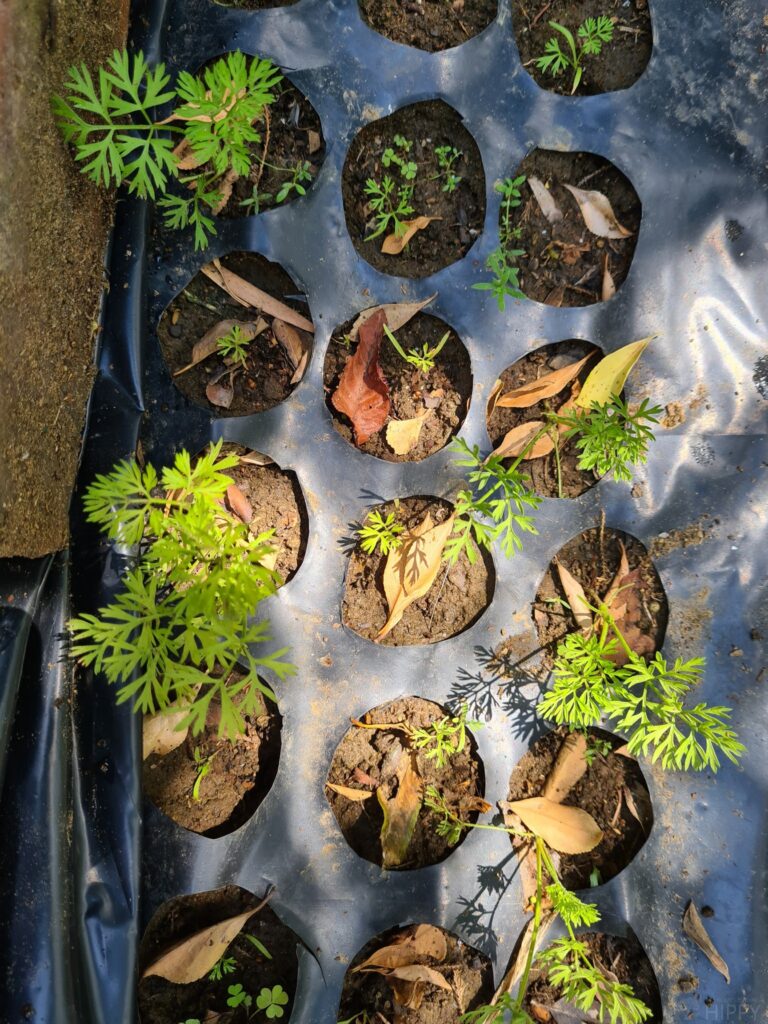
Conclusion
In my humble opinion, it is always best to go with an option that does not introduce harmful chemicals, destroy biomes, or involve back-breaking work!
My weapon of choice is my black painter’s tarp to smother the grass and weeds.
I am a little OCD, for me the tarp has a beautiful effect on my yard. Painter’s tarp is sold in long rectangular rolls.
I pick where I wish to insert a veg bed and just roll the tarp out. The result is a perfectly symmetrical bed!
The worms love it because as those roots are deprived of light and air, they are converted into a smorgasbord of dead plant matter that they can convert into compost for you free of charge.
I do hope you have enjoyed this article and that you are already mapping out in your head what you are going to do about your grass and weed problem.
Please let me know what works for you in the comments below.
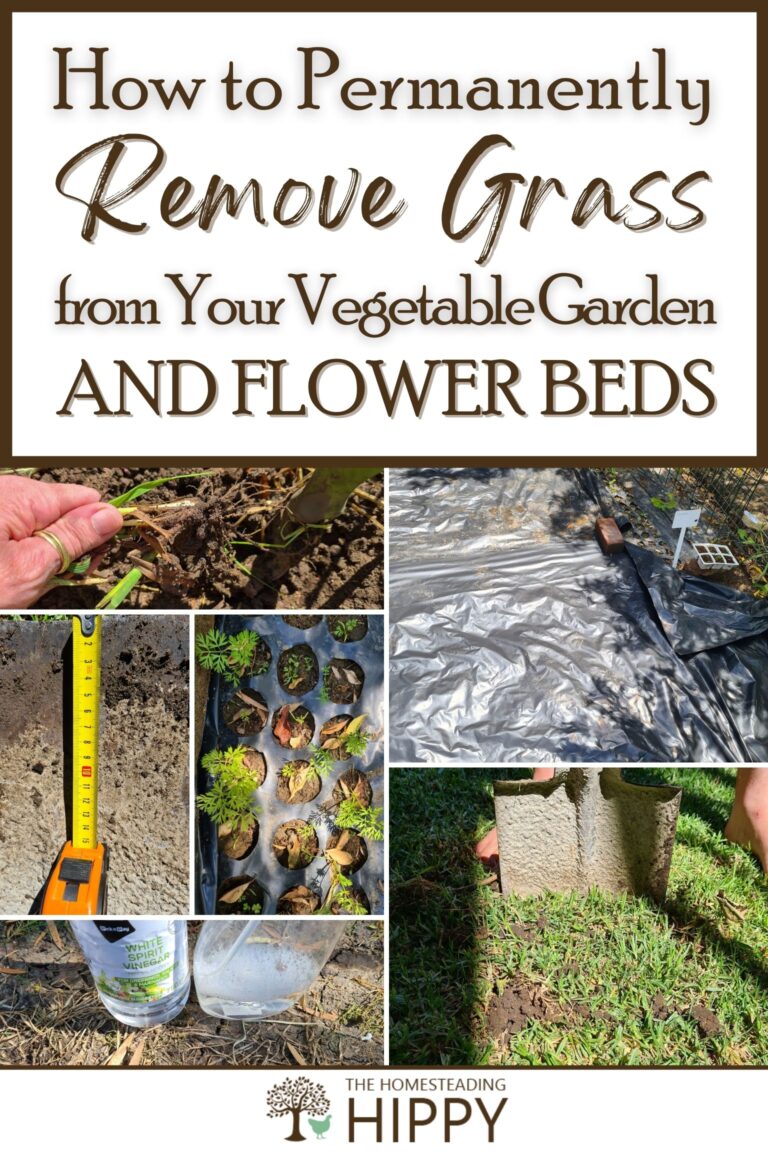

Di-Anne Devenish Seebregts was raised in an environment where daily life consisted of hiking, environmental conservation, growing fruit and vegetables, and raising poultry for meat and eggs.
She combined her passion for the writing word with her love of the pride that comes with not relying on others. She raised three children (who are now adults) to value the environment, and understand the value of being self-sufficient.
Find out more about Di-Anne on our About Us page.
